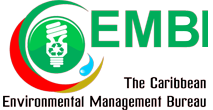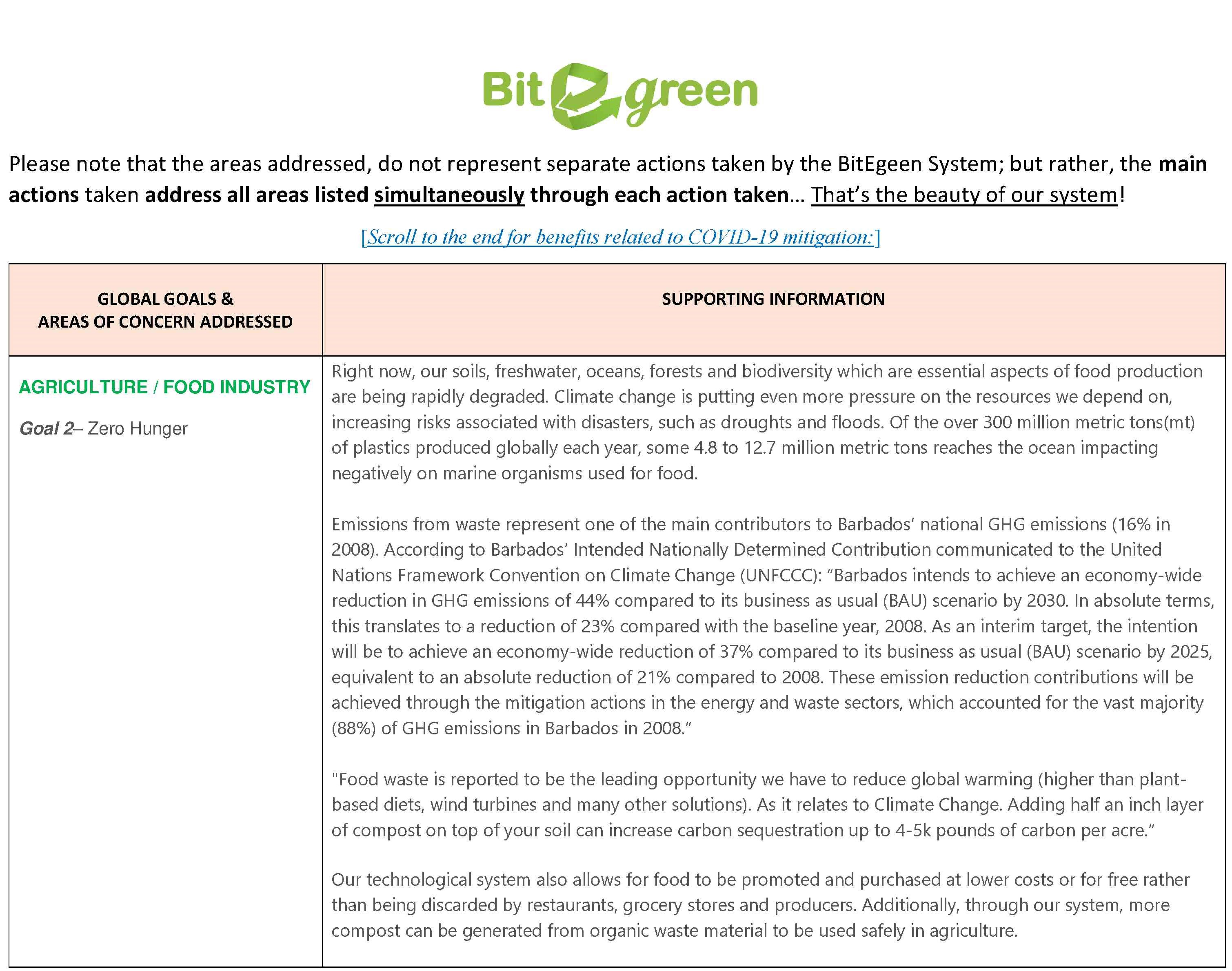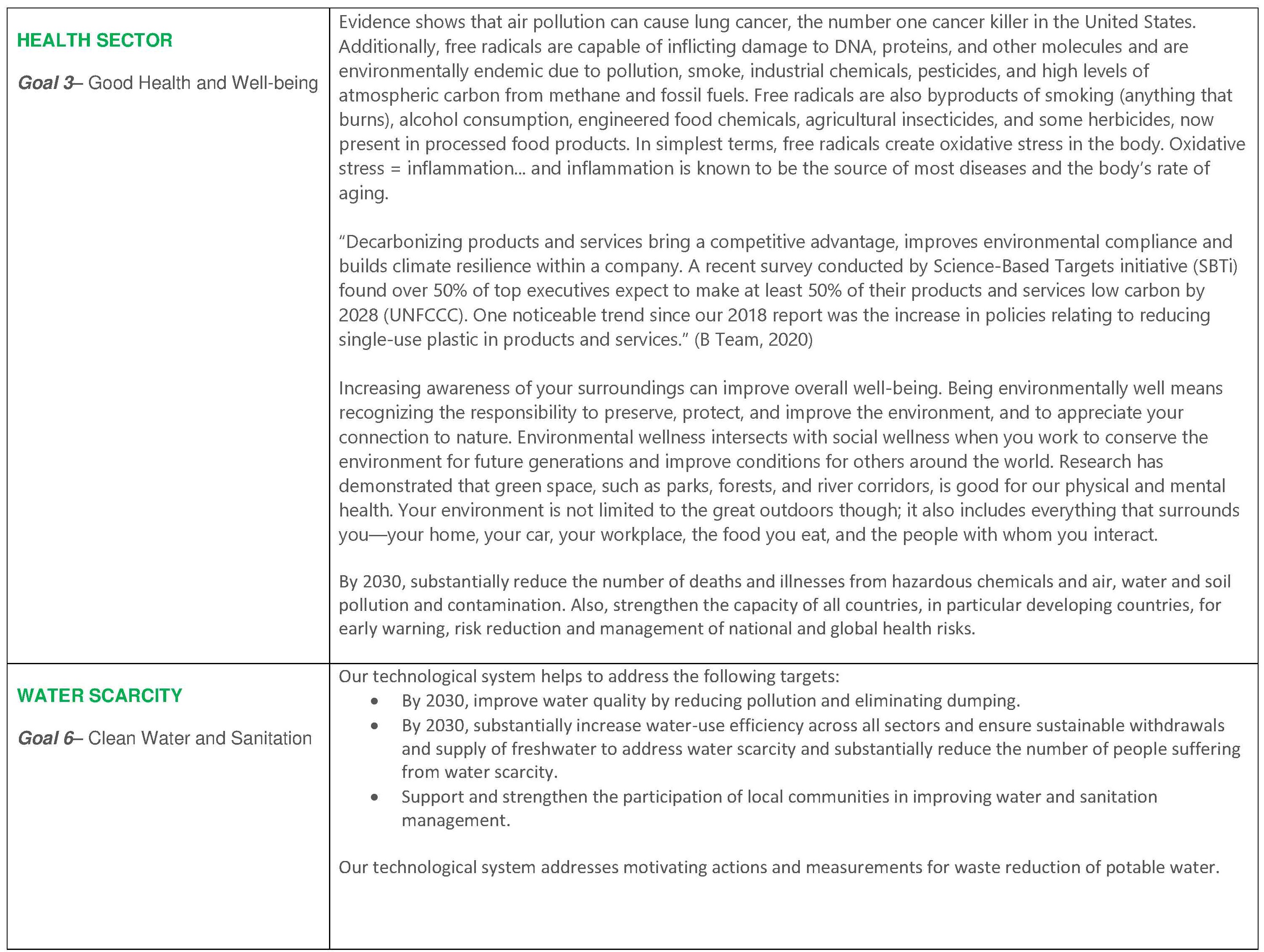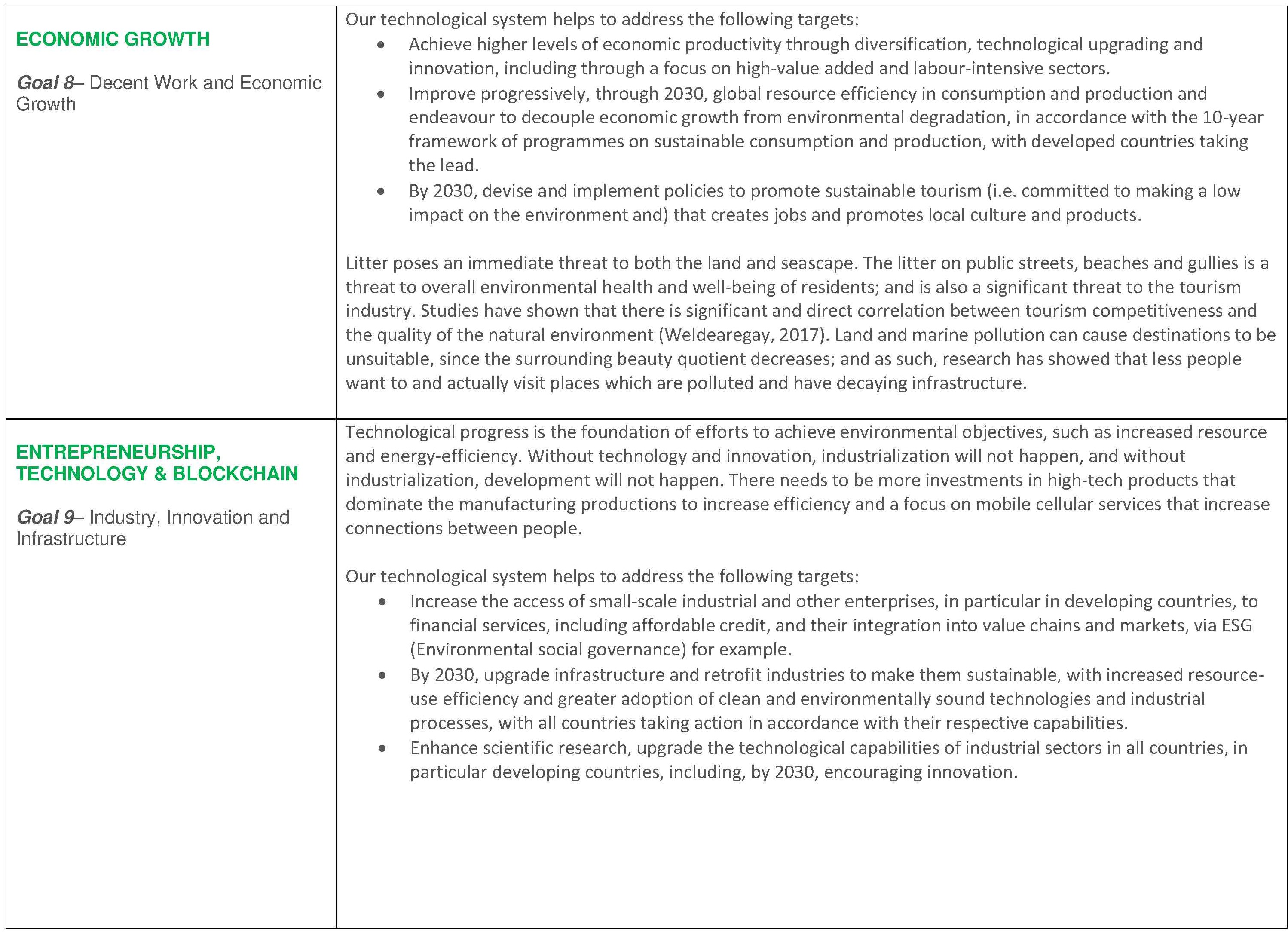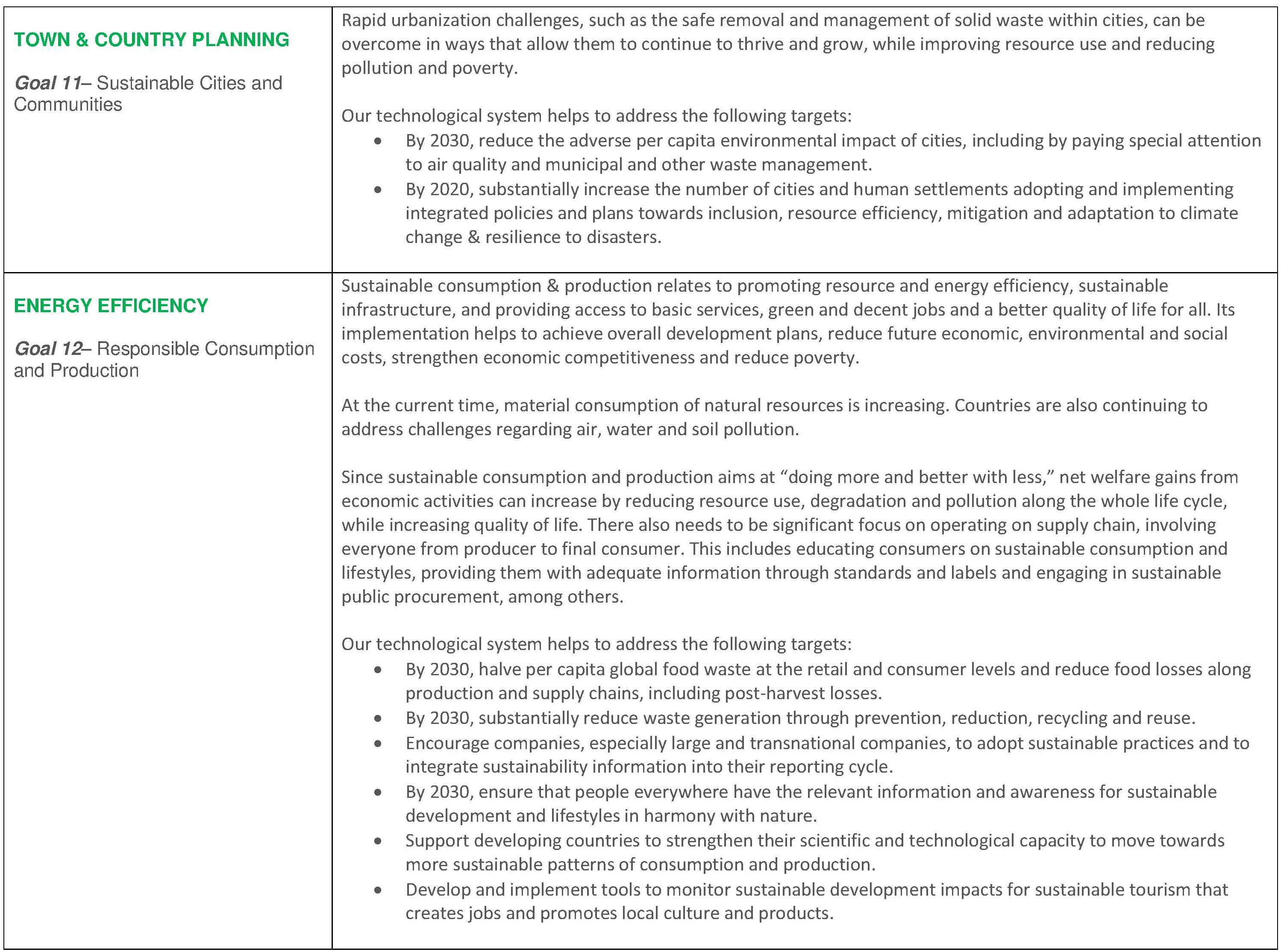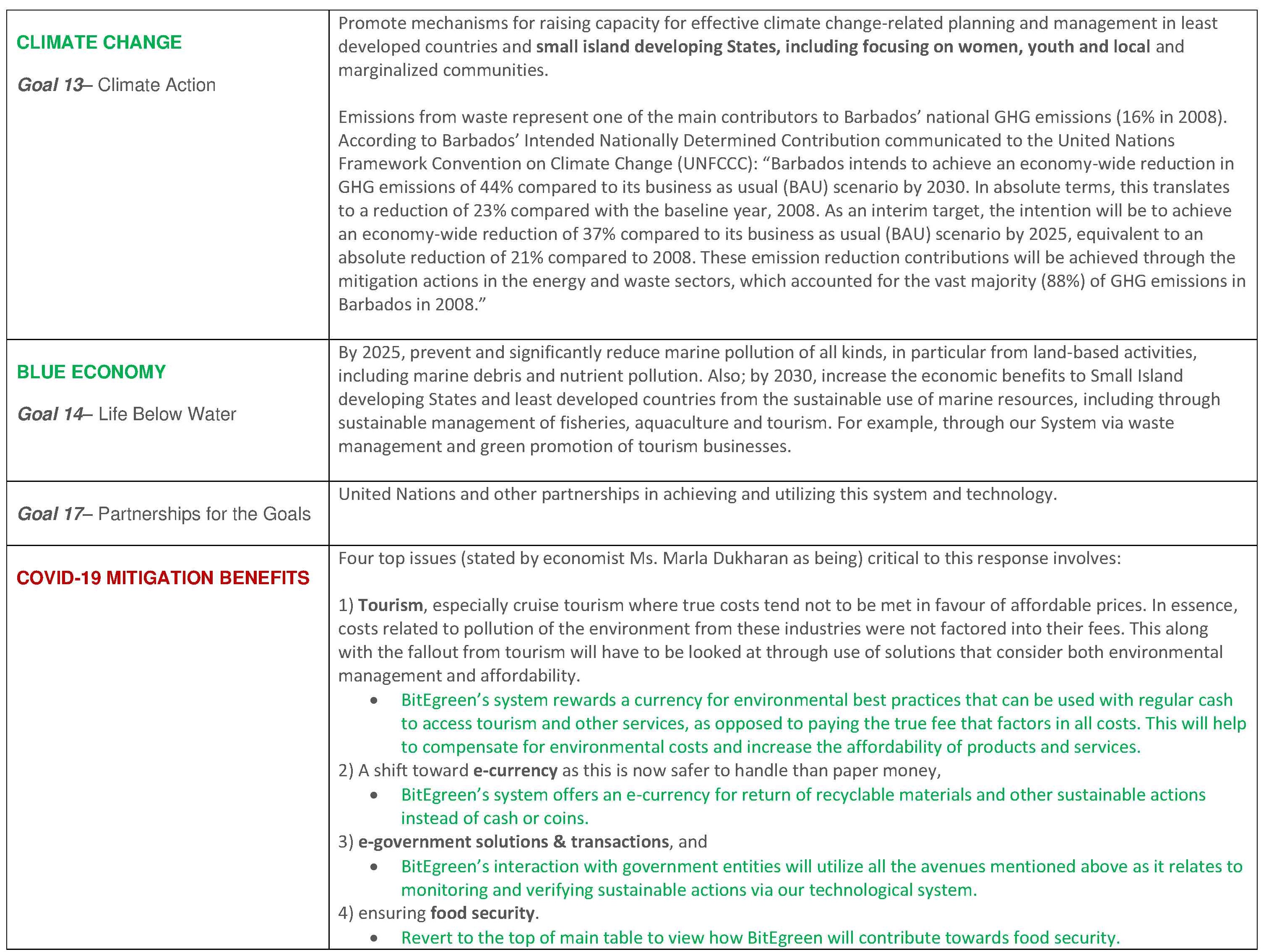What initiative(s) do you, your organization or company currently undertake in relation to the blue economy?
We use technology to assign monetary value to reusable and recyclable material, and even other sustainable actions for all citizens and corporations, making it easy for companies to market, launch, donate, sell or purchase their products and services using recycling and the reduction of all forms of waste (including food that can generate compost) as a catalyst, via a circular economy and resource economics method.
Three (3) thematic development areas have been identified by UNDPs strategic plan. They are 1. Sustainable development pathways (development planning and inclusive sustainable growth, environment and natural capital, economic recovery) 2. Inclusive and effective democratic governance (rule of law, justice, security and human rights, inclusive political processes, responsive and accountable institutions, conflict prevention and peace building) and 3. Resilience building (climate change, disaster risk reduction and sustainable energy). How does the proposal/initiative respond to any of these development areas?
1. We tackle issues of sorting garbage at the source by implementing schemes to achieve separation of recyclables within homes and businesses rather than after being mixed with “wet” waste thus rendering a significant portion of recyclables as useless. Approaches involve well designed gamification techniques within schools and businesses to drive pre-sorted recyclables from properties to reduce littering and its associated consequences and the use of landfills by simultaneously shifting to environmentally sustainable economic activity, innovation and development.
2. Our system is designed to increase the environmental awareness and earning power of each citizen, and organizations such as schools for example, which would translate to economic and environmental benefits at all levels of operation.
3. Emissions from waste represent one of the main contributors to Barbados’ national GHG emissions (16% in 2008). According to Barbados’ Intended Nationally Determined Contribution communicated to the United Nations Framework Convention on Climate Change (UNFCCC): “Barbados intends to achieve an economy-wide reduction in GHG emissions of 44% compared to its business as usual (BAU) scenario by 2030. In absolute terms, this translates to a reduction of 23% compared with the baseline year, 2008. As an interim target, the intention will be to achieve an economy-wide reduction of 37% compared to its business as usual (BAU) scenario by 2025, equivalent to an absolute reduction of 21% compared to 2008. These emission reduction contributions will be achieved through the mitigation actions in the energy and waste sectors, which accounted for the vast majority (88%) of GHG emissions in Barbados in 2008.”
Describe how this initiative relates to Sustainable Development Goal (SDG) 14 – Life Below Water:
A publication by the United Nations Environment Programme (UNEP) on “Emerging Issues for Small Island Developing States (SIDS) – Results of the UNEP Foresight Process – 2014” states that “Population growth, socio-economic development, and lifestyle changes are increasing the quantity of waste and altering its composition in SIDS. National waste management strategies still focus on end-of-life solutions, with most of the waste collected disposed of in sanitary landfills. While waste management presents various challenges, it also provides opportunities for greening SIDS’ economies through turning waste into resources. This requires a shift towards reducing, reusing, and recycling using SIDS-appropriate technologies. Opportunities should be explored for mobilizing investments and technology transfer and strengthening technical and human capacity.”
According to the SGP Country Programme Strategy For OP6 Barbados – 2015-2018: “Barbados is referred to as a Small Island Developing State, and with a land area of 431 square kilometres, the whole island should be considered one landscape/seascape. There exist several coastal areas that are considered to be marine protected areas where the inter-relationship between anthropogenic activities (i.e. chiefly of environmental pollution and pollutants originating from human activity) in the terrestrial landscape and the nearshore marine environment, pose particular sustainable development challenges.”
Litter poses an immediate threat to both the land and seascape of Barbados. The litter on Barbados’ public streets, beaches and gullies is a threat to overall environmental health and well-being of approximately 285,000 residents; and is also a significant threat to the approximately 1.4 million visitors per year tourism industry. Studies have shown that there is significant and direct correlation between tourism competitiveness and the quality of the natural environment (Weldearegay, 2017). Land and marine pollution can cause destinations to be unsuitable, since the surrounding beauty quotient decreases; and as such, research has showed that less people want to and actually visit places which are polluted and have decaying infrastructure. Inefficient waste management systems can result in large amounts of resources being squandered, and in the case of natural resources inclusive of marine biodiversity – cause deterioration or destruction. As such, Barbados spends millions per year on waste management and sends over 1100 tonnes of garbage to the landfill daily, but approximately 60 to 70% of this is recyclable. Present and previous attempts at recycling initiatives have been highly inefficient, though there is fair interest from the public.
The United Nations indicated in 2020 that “Nutrient pollution loads to the oceans have tripled since pre-industrial times, now approaching around 13 million metric tons (mt) per year, leading to exponential growth in eutrophication…and causing hundreds of billions of dollars in economic damage annually…
Of the over 300 million metric tons(mt) of plastics produced globally each year, some 4.8 to 12.7 million metric tons reaches the ocean impacting negatively on marine organisms and ecosystems. Only about 9 percent of the over 2 billion mt of plastic produced to date has been recycled, so we remain a long way from truly ‘closing the loop’ on ocean plastics pollution. UNEP estimate the annual damage from marine plastics at USD $13 billion per year and growing.”
How does the initiative propose strategies to effectively identify, engage and ensure the meaningful participation of targeted groups/geographic areas, with a priority focus on the excluded and marginalized?
Our solution to the waste management challenge is to incentivize wider participation in recycling, tackle issues of sorting garbage at the source, and develop a convenient disposal and reliable collection network for recyclables. The system can integrate into existing recycling programmes for improvement and is an integrated effort using schools, students, tourists and the corporate sector, inclusive of the hotel sector as main drivers of the programme, while it helps to educate users and address cultural change to engender desired behaviours. We’ve created a system which uses gamification (i.e. the application of game design elements, techniques and principles, to business and social impact challenges to motivate participation and improve user engagement. A public sensitization plan is also an important aspect.
How does the initiative use knowledge, good practices, and past lessons learned to inform the proposal design?
The system was designed using the principles of design, critical and strategic thinking for problem solving; with expert knowledge in field areas and engaging focus groups. Continuous testing and evaluation is also incorporated.
How does the initiative use gender analysis in the project design? How does the proposal/initiative respond to this gender analysis with concrete measures to address gender inequities and empower women?
This project does not single out specific benefits to men and women; but rather, seeks to benefit all citizens of a community. However, persons responsible for shopping, parenting and household tasks which are usually women will be crucial to the success of the initiative.
How does the initiative consider potential environmental opportunities and adverse impacts, by applying a precautionary approach?
This initiative seeks to provide a secure foundation for the development of environmentally friendly businesses and circular economy systems, in terms of seeking to recover maximum materials needed for these businesses to operate efficiently and thrive.
It is also highly technological, and the project’s key resources will be protected on cloud platforms and servers in other territories; and companies responsible for storing recyclables will be selected based on their ability to securely store these materials.
How does the initiative provide a means of measuring results and identifying impact?
The technology used in this initiative is positioned to assist in waste management through measurement and analysis of data to identify impact. Also, via utilization of necessary experts.
How does the initiative provide a framework for identifying and mitigating risks?
This initiative seeks to pilot and test every aspect it implements continuously, where solutions for risks can be incorporated and tested to ensure success at implementation. Data analysis via our technology will also assist with identifying and mitigating risks, and our technology also provides a platform that can assist in reducing food waste.
How does the initiative provide a means of ensuring the cost-efficient use of resources?
This initiative presently utilizes volunteers or in-kind donations to assist further skills development. A budget with clear tasks is set and will be monitored for economical decision making. In general, the whole initiative is built on a foundation of efficient use of resources through the circular economy and resource economics.
How does the proposal provide a means of ensuring that the initiative links up with other relevant on-going projects and initiatives, whether led by UNDP, national or other partners, to achieve more efficient results (including, for example, through sharing resources or coordinating delivery)?
This proposal seeks to assist with the pilot of the initiative for the technology expected to be built with assistance from another UNDP initiative. After the pilot, that same initiative has expressed a willingness to assist with further implementation. The Ministry of Environment and National Beautification has expressed a willingness to assist with the coordination of the system related to schools and any other area where possible. The system is designed to utilize partnerships with other initiatives to enhance their success.
How does the budget allocate for the initiative to conduct regular monitoring and evaluation activities, during the implementation of the initiative?
18% regarding the full initiative. However, this whole initiative is built on a foundation of monitoring and evaluation as it is an essential part to the solution we seek to provide.
How have other community partners contributed to the design of the initiative?
TEN Habitat (The Entrepreneurial Network) provided a mentor to assist in the design thinking process of the Founder, and the technology team (individual consultants) brought the design of the system to life through design of a technological system which would be available for user and public feedback to finalize the specifications and design of the BiitEgreen system.
Is the proposal for a “new” idea or to “scale up” an existing intervention?
The proposal is to pilot a “new” idea to prepare for implementation and scaling.
How does the initiative display innovation, experimentation and the potential to yield quick results?
The initiative is a novel solution that was developed, and we seek to test every aspect of the system to further determine the best outcome towards best waste management practices. The system uses gamification which encourages engagement with a product or service, and technology re data to assist with yielding quick and efficient results.
How are you willing to lend support to others in your area of interest?
Persons in the area of Natural Resource and Environmental Management may acquire data analysis to assist in further or other research; and where possible, can work within and towards the development of the venture.
